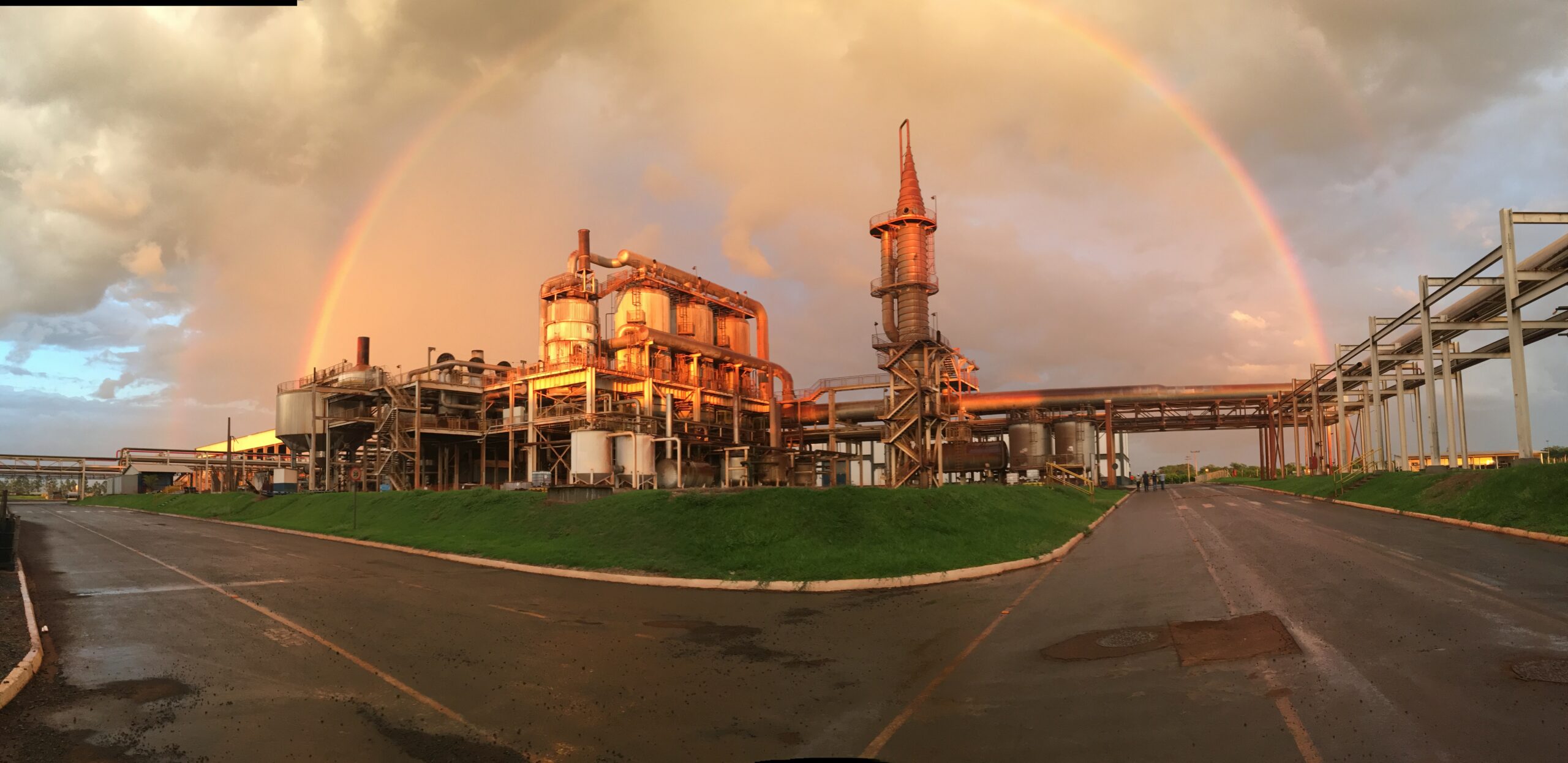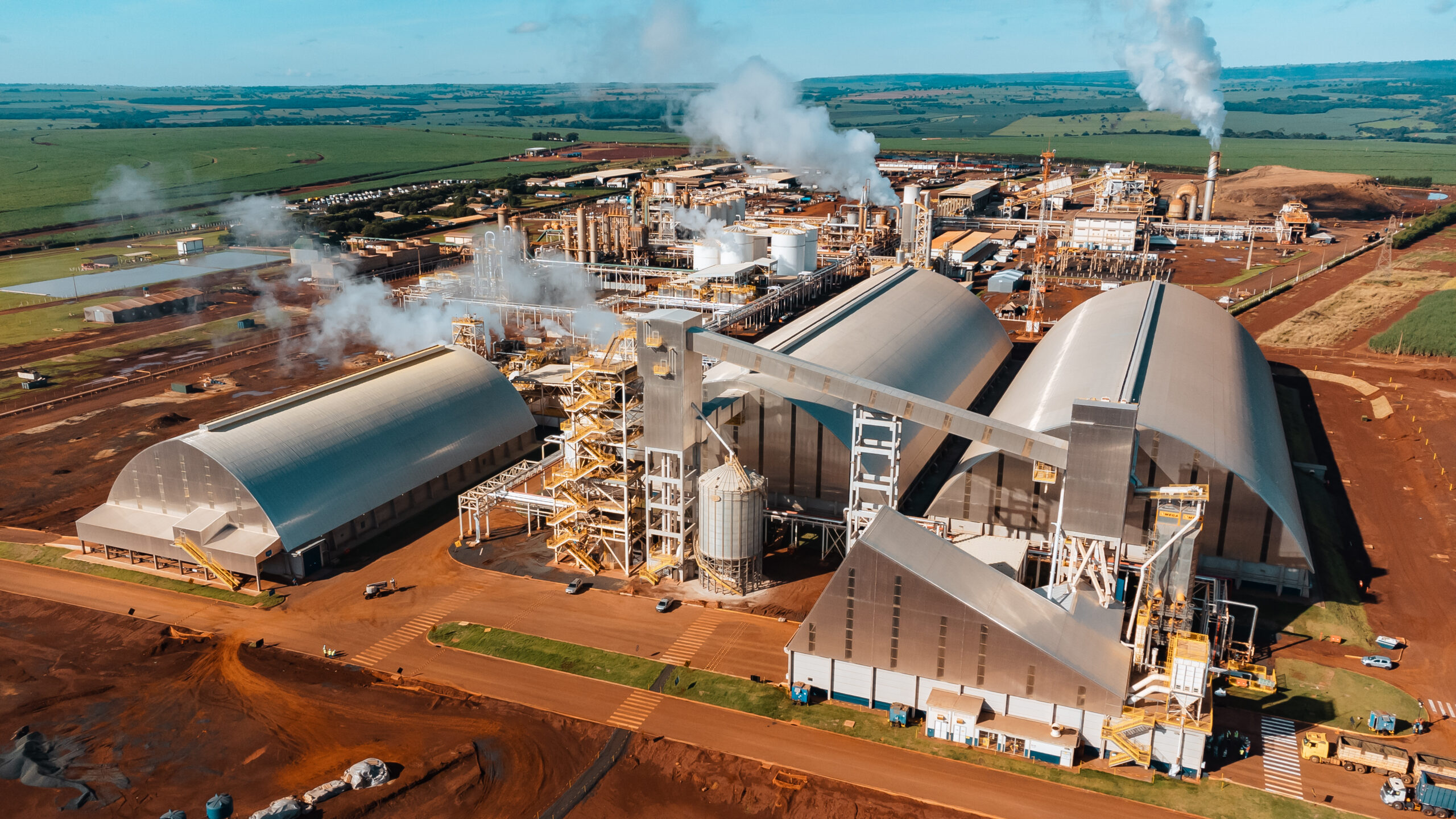26th July 2023
One of the world’s largest sugar-energy groups, São Martinho S.A., has fulfilled its goal to certify all its plants against the Bonsucro Production Standard. Usina Boa Vista is the fourth and final plant from the group to become certified.

Photo of Usina Boa Vista from São Martinho
Certifying at Scale
São Martinho S.A in Brazil has over 12,000 employees, and an agricultural harvest area that covers 350,000 hectares – twice the size of London. Per harvest, it has a milling capacity of 24 million tonnes of sugarcane between its four plants: Usina Iracema, Usina Santra Cruz, Usina São Martinho, and Usina Boa Vista.
Due to the sheer scale of São Martinho’s operations, it has taken over a decade of work and investment to certify all four plants. São Martinho certified its first mill, Usina Iracema, in October 2012 after aligning its production processes, from sugarcane cultivation to the manufacture of sugarcane derivatives, to the Bonsucro Production Standard. Its certification journey reinforces the strength of São Martinho’s commitment to sustainability, whilst also highlighting the fact that changing operations for the better can take time.
Usina Boa Vista
The certification of Usina Boa Vista is the final step in São Martinho’s certification journey. Its focus is on ethanol production, alongside energy cogeneration and yeast production. Since it was officially opened in 2008, Usina Boa Vista has become one of the largest plants in Brazil with regards to potential ethanol production. It has an area of 1.7 million square metres, and the plant itself has a layout designed for future expansions of its operations.

Photo of Usina Boa Vista from São Martinho
Drawing on past experience of certification
Sustainability is important to São Martinho and is one of its strategic pillars, alongside people and relationships. Certification of its mills has been key to demonstrating São Martinho’s commitment to sustainability across the environmental and social aspects of its operations.
The São Martinho group chose Bonsucro because it ensured alignment with social and environmental best practices and compliance with national and global policies. Bonsucro was also considered to generate opportunities and benefits for São Martinho. Usina Iracema was the first mill in the group to be Bonsucro certified in 2012 for sugar and ethanol, and in its 2012/2013 Sustainability Report São Martinho commented that Bonsucro certification would “allow the Iracema mill to export to increasingly demanding markets, such as the European Union and Asia”.
To achieve Bonsucro certification, Usina Boa Vista carried out a study on its land to identify areas of high conservation value (HCV) and examples of land use change, in line with Bonsucro’s rules around land use change. Preventing the cultivation of sugarcane on land which has high conservation value, according to international definitions, is a core indicator in the Bonsucro Production Standard, ensuring that producers look after their surrounding environment and protect local ecosystems.
The commitment of staff was critical to the success of Usina Boa Vista’s certification, and one of Usina Boa Vista’s key learnings from the process was that it’s important to explain and reinforce the concept of sustainability among employees and partners. Usina Boa Vista was also able to draw on São Martinho’s experience of implementing Bonsucro Standards and support from the other mills, as they worked towards achieving certification themselves.
Now all mills in the São Martinho group are Bonsucro certified. The length and scale of their certification journey reinforces the importance of sustainability to São Martinho, and shows that pursuing sustainable practices is worth the time and investment. With the certification of Usina Boa Vista, São Martinho has consolidated itself as a group committed to producing sustainable sugarcane and respecting both people and the environment. São Martinho plans to invest in more sustainability projects in the future.
Find out more about certification here.





